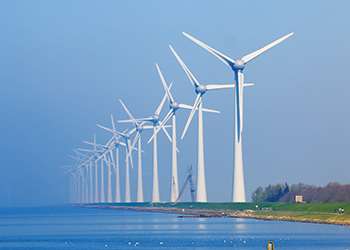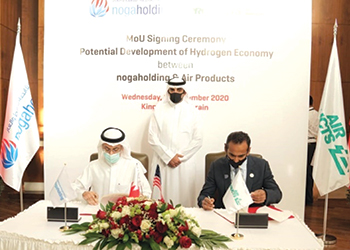
 Reshef ... meeting decarbonissation targets
Reshef ... meeting decarbonissation targets
Biden’s commitment to reenter the Paris Agreement could fortify worldwide efforts to transition to a net-zero carbon economy by 2050 and regain US leadership in global climate action efforts, Rami Reshef, CEO, GenCell Energy, tells OGN
US President-elect Joe Biden has vowed to make climate change one of his highest policy priorities. Committing to rejoin the Paris Agreement would position the US to significantly ramp up its commitments to drastically reducing carbon emissions and in parallel to increasing its investments in decarbonisation through support for clean energy technologies, among these fuel cells and clean hydrogen.
Rami Reshef, CEO of alkaline fuel cell developer GenCell, comments: "Joe Biden’s commitment to tackle climate change by reducing fossil fuel emissions and switching to clean energy is very encouraging. Biden has said he plans to follow other major economies, including Japan, the EU and the UK in pledging to reach net-zero emissions by 2050.
Pledging to rejoin the Paris climate accord on his first day as president, Biden has promised to position climate change at the centre of US foreign policy and to lead the US government to rejoin the landmark climate change agreement early in his presidency.
 |
A GenCell G5rx with 5kW fuel cell generator |
Combined with ambitious domestic climate policies, green recovery from the Coronavirus pandemic and a renewed push for international collaboration on various climate initiatives, Biden’s commitment to reenter the Paris Agreement could fortify worldwide efforts to transition to a net-zero carbon economy by 2050 and regain the US a leadership role in global climate action efforts.
"Reaching this ambitious target will require the US to accelerate its investment in clean energy technologies, among these hydrogen, to replace fossil fuels. To rapidly build out the hydrogen energy economy, the EU and many of its member states, as well as Japan, Australia and other nations have issued hydrogen roadmaps with substantial financial commitments to enhance hydrogen infrastructure. The EU, for example, has said that of 2030 and onwards, renewable hydrogen will be deployed at a large scale across all hard-to-decarbonise sectors. And Japan is targeting a commercial hydrogen fuel supply chain by 2030.
"For the world to achieve its climate targets, it is imperative that the new Biden administration’s climate plan, which will see $400 billion invested over 10 years in clean energy and climate research, include a similar commitment to building out the hydrogen economy. Significant investment is needed to overcome one of the key obstacles to the use of hydrogen energy - the high cost and complexity of creating an infrastructure to transport and store that hydrogen.
"As one means to establishing that hydrogen infrastructure, we propose that the US leverage technologies that extract hydrogen-on-demand from ammonia alongside alkaline fuel cells that efficiently and economically generate power from that hydrogen wherever it is needed. This would create an ultra-reliable, zero emissions power source at a running cost of thirty to fifty per cent less than diesel fuel."
Meeting the ambitious global decarbonissation targets needed to prevent global warming requires broad and dramatic changes in power provision across all industry segments; hydrogen is needed to go beyond solar PV and wind generation and electrification of transport to include also the most difficult to decarbonize industry segments from heavy-duty transport including trucking, railways, marine and air shipping to steel production and other highly energy-intensive industrial processes.
Hydrogen produced from clean renewables offers the potential to serve these toughest power requirements, but infrastructure to transport that hydrogen and store it where it is needed is complex, time-consuming and costly to build out.
The winning combination of alkaline fuel cells with liquid ammonia can circumvent these obstacles and can be easily deployed in remote and difficult to reach locations to power diverse applications.
"Adding a further dimension of green ammonia synthesis will enable comprehensive decarbonisation of the power lifecycle for a fully clean and green power future. With the renewed commitment of the US government to achieving the potential of hydrogen, this green future could indeed become reality," Reshef concludes.















































































